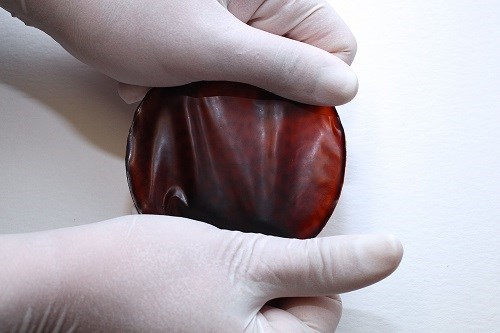Italian Tech Institute Develops Bioplastics From Agro-Waste
Researchers at the Instituto Italiano di Tecnologia have made bioplastics from edible food waste.
Researchers at the Smart Materials, Nanophysics department of the Instituto Italiano di Tecnologia have succeeded in producing bioplastics through the direct transformation of edible vegetable waste. Coordinated by tenured scientist Athanassia Athanassiou, the team used industrially processed edible vegetable and cereal waste. Model bioplastic systems were synthesized from wastes of parsley and spinach stems, rice hulls, and cocoa pod husks by digesting in trifluoroacetic acide (TFA), casting, and evaporation.
According to researcher Ilker Bayer, many other elements present in these plants are carried over into the bioplastics rendering them with many exceptional thermo-physical properties. In a recent article that appeared in the American Chemical Society’ Macromolecules publication, the team showed that due to their broad compatibility with cellulose, amorphous cellulose can be naturally plasticized with these bioplastics by simply mixing during processing.
Comparison of the mechanical properties of films made with these waste bioplastics with various petroleum based synthetic polymers, including PP, PE, PET, TPU, as well as starch-polymer blends, and biopolyesters such as polycarpolactoness and polylactic acids (PLA), show these unusual bioplastics to fill the performance gap between synthetic plastics and conventional biopolymers. For example, amorphous pure cellulose films display high ultimate tensile strength (UTS) at high Young’s modulus comparable to PET, whereas parsley, spinach and rice bioplastic films cluster close to elastomers and LDPE thermoplastic.
Bioplastics from cocoa pod husk can be compared with HDPE and PP. It is also possible to produce bioplastics designed to close the gap between PET and PP, the researchers say. For instance, a blend of microcrystalline cellulose with spinach (10 wt%) would yield a property that directly falls in the middle of this gap. This proves that a wide range of mechanical properties can be designed by simply blending these vegetable waste bioplastics that many times cannot be achieved by solution or thermoform blending of conventional polymers due to incompatibility issues.
Want to find or compare materials data for different resins, grades, or suppliers? Check out Plastic Technology’s Plaspec Global materials database.

Related Content
-
In Sustainable Packaging, the Word is ‘Monomaterial’
In both flexible and rigid packaging, the trend is to replace multimaterial laminates, coextrusions and “composites” with single-material structures, usually based on PE or PP. Nonpackaging applications are following suit.
-
Get Color Changes Right In Extrusion Blow Molding
Follow these best practices to minimize loss of time, material and labor during color changes in molding containers from bottles to jerrycans. The authors explore what this means for each step of the process, from raw-material infeed to handling and reprocessing tails and trim.
-
Formulating LLDPE/LDPE Blends For Abuse–Resistant Blown Film
A new study shows how the type and amount of LDPE in blends with LLDPE affect the processing and strength/toughness properties of blown film. Data are shown for both LDPE-rich and LLDPE-rich blends.














.png;maxWidth=300;quality=90)

